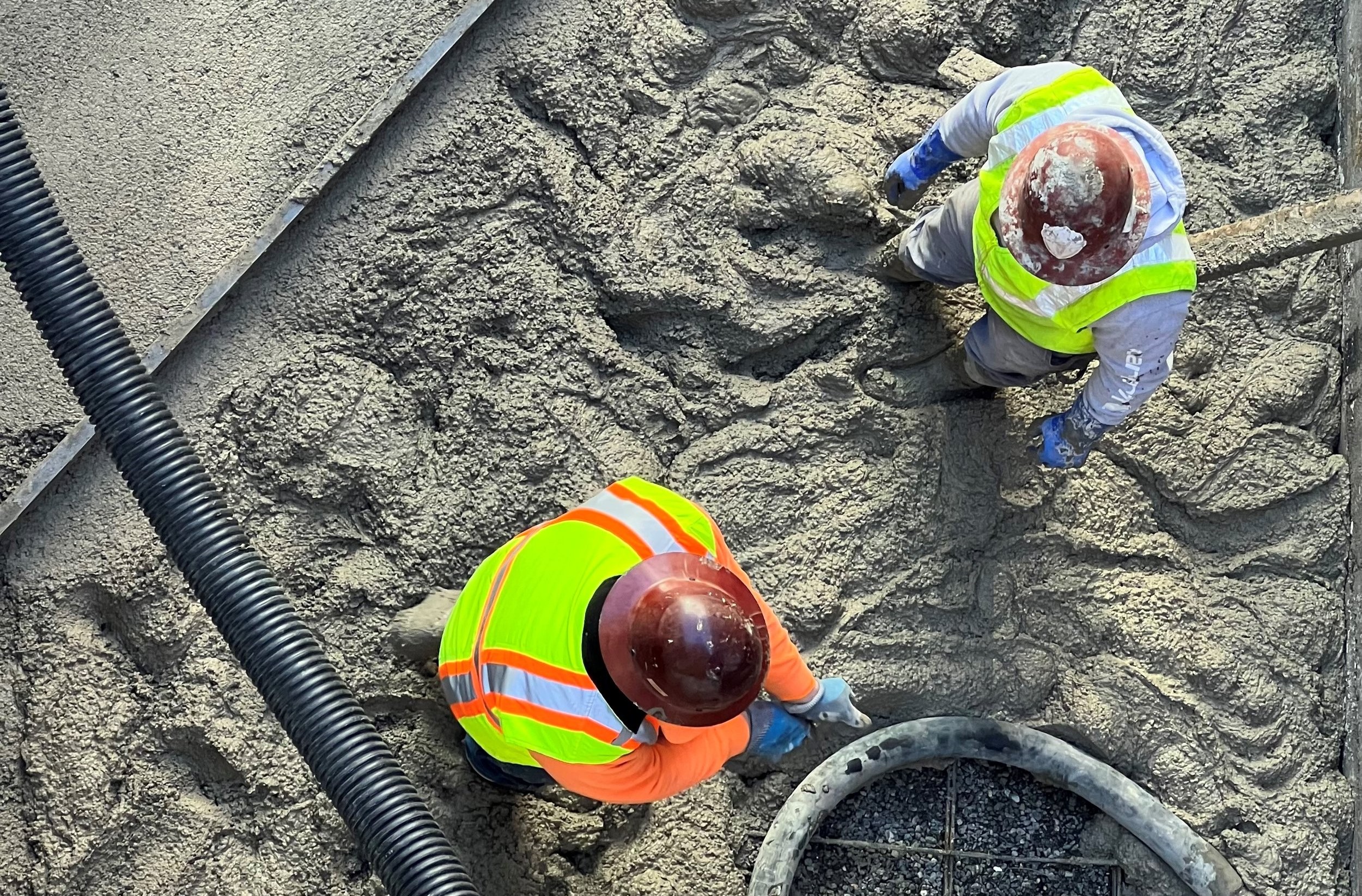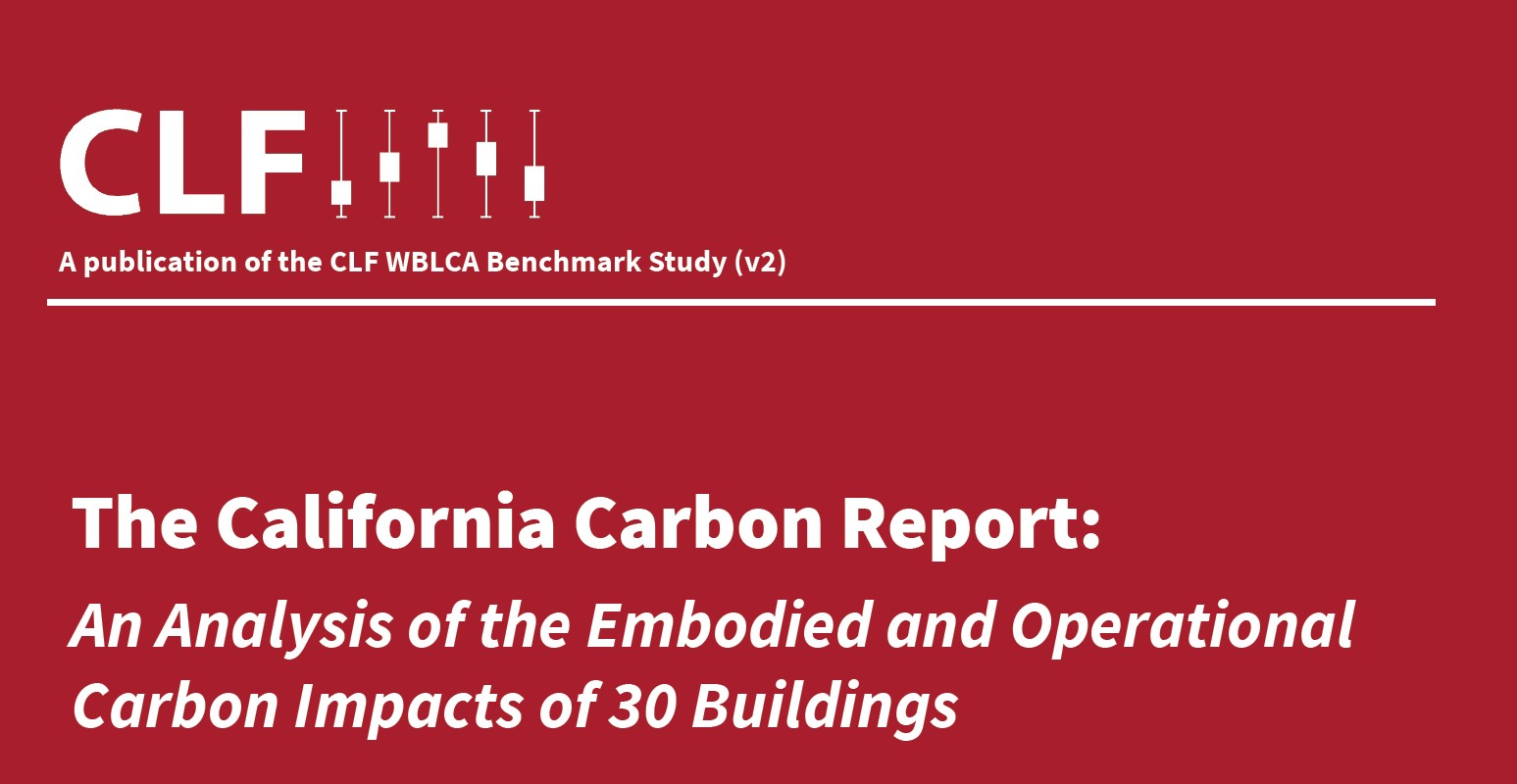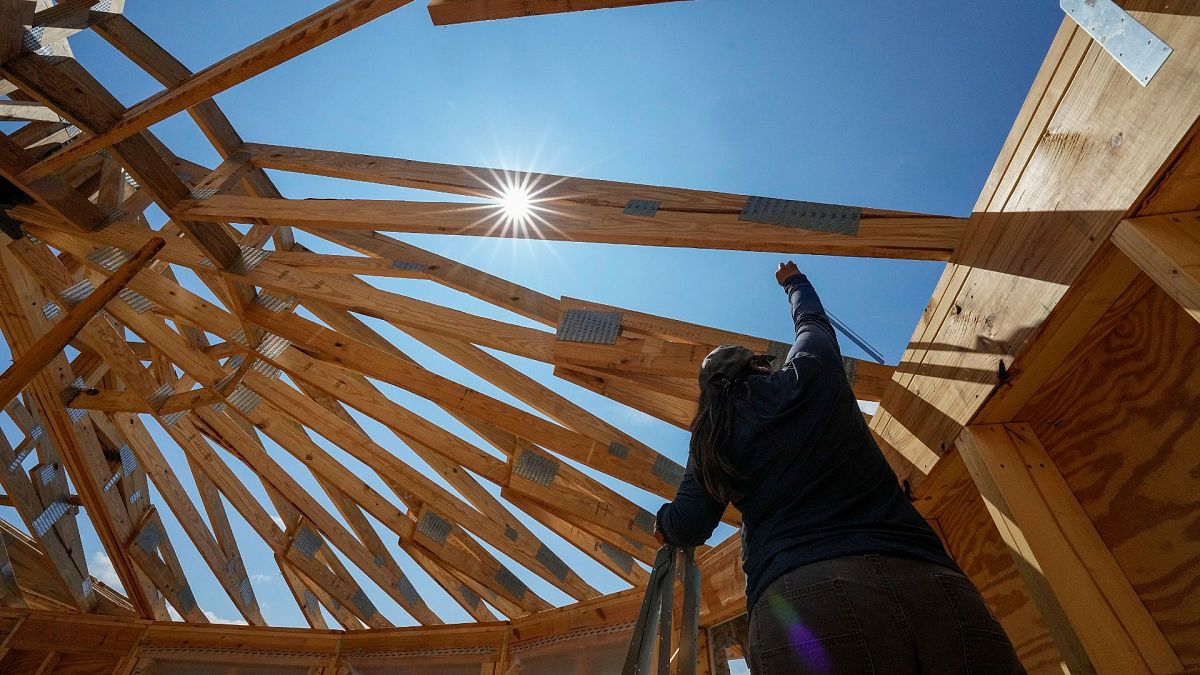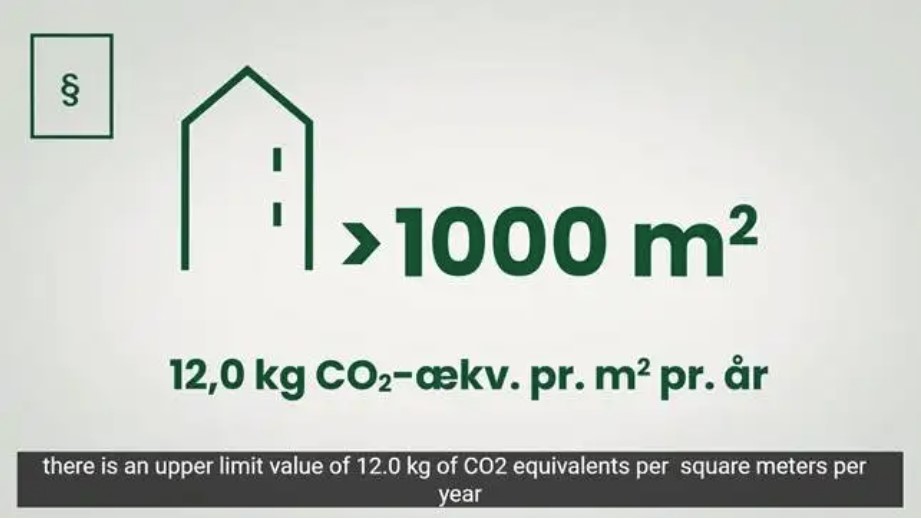
A Harmonized Dataset of High-Resolution Whole Building Life Cycle Assessment Results in North America: Data only – First Public Release
This is a high-resolution dataset of building design characteristics, life cycle inventories, and environmental impact assessment results for 292 building projects in the United States and Canada.
https://figshare.com/articles/dataset/A_Harmonized_Dataset_of_High-Resolution_Whole_Building_Life_Cycle_Assessment_Results_in_North_America_i_Data_only_-_i_i_First_Public_Release_i_/28462145/1

Lower-Carbon Concrete Task Force
Concrete is the backbone of modern construction, but it is also a major contributor to global carbon emissions. The production of cement, a key ingredient in concrete, accounts for approximately 8% of worldwide CO₂ emissions.
https://lowercarbonconcrete.org/

Reducing embodied carbon in Canada’s buildings
Embodied carbon is widely recognized as the next frontier in building decarbonization, but where to begin? CAGBC has released a new white paper, charting CAGBC has released a new white paper, charting a path forward: Reducing Embodied Carbon in Canada’s Buildings. The report summarizes insights from the inaugural National Embodied Carbon Summit.
https://www.cagbc.org/news-resources/cagbc-news/reducing-embodied-carbon/

CSBE student Keagan Rankin wins the 2024 Gold Roof Award for Housing Research Excellence
Learn about our funding for innovative Canadian housing research, training, knowledge mobilization and outreach. Meet this year’s and past recipients. See how their work is making an impact.
https://www.cmhc-schl.gc.ca/professionals/project-funding-and-mortgage-financing/funding-programs/all-funding-programs/housing-research-awards

National whole-building life cycle assessment practitioner’s guide – NRC Publications Archive – Canada.ca
National whole-building life cycle assessment practitioner’s guide
https://nrc-publications.canada.ca/eng/view/object/

Embodied Carbon Harmonization and Optimization (ECHO) Project
The Breakthrough Agenda aims to make ‘near-zero emission and resilient buildings a new normal in all regions by 2030.
https://www.echo-project.info/

Global harmonisation of whole life carbon assessments
The Breakthrough Agenda aims to make ‘near-zero emission and resilient buildings a new normal in all regions by 2030.
https://www.rics.org/content/dam/ricsglobal/documents/standards/WLCA-harmonisation-guide.pdf

Pilot Version | UK Net Zero Carbon Buildings Standard
The Pilot Version of the UK Net Zero Carbon Buildings Standard
https://www.nzcbuildings.co.uk/pilotversion

Label Program for Low Embodied Carbon Construction Materials | US EPA
EPA’s draft program approach to develop a Label Program for Low Embodied Carbon Construction Materials.
https://www.epa.gov/greenerproducts/label-program-low-embodied-carbon-construction-materials

How to build more with less: New model shows how Canada can reconcile its housing and climate targets by adopting established sustainable construction practices
A new model designed finds that adopting the right mix of sustainable construction practices could enable Canada to meet it housing goals without blowing past its climate commitments.
https://civmin.utoronto.ca/how-to-build-more-with-less-new-model-shows-how-canada-can-reconcile-its-housing-and-climate-targets-by-adopting-established-sustainable-construction-practices/

Biden-Harris Administration Announces Nearly $160 Million in Grants to Support Clean U.S. Manufacturing of Steel and Other Construction Materials | US EPA
EPA News Release: Biden-Harris Administration Announces Nearly $160 Million in Grants to Support Clean U.S. Manufacturing of Steel and Other Construction Materials
https://www.epa.gov/newsreleases/biden-harris-administration-announces-nearly-160-million-grants-support-clean-us

Zero Emission Buildings in Vancouver and Toronto: Requirements & Timelines
Learn about Zero Emission Buildings (ZEBs) in Vancouver and Toronto, their application requirements, and how to measure emissions to achieve compliance.
https://www.arbor.eco/blog/zero-emission-buildings-in-vancouver-and-toronto-requirements-timelines

Forward-looking ZCB-Design Standard guides ambitious market transformation
Canada Green Building Council (CAGBC) introduced the latest version of its Zero Carbon Building – Design Standard (ZCB-Design). Updates help minimize risk, future-proof assets, and attract investment.
https://www.cagbc.org/news-resources/cagbc-news/forward-looking-zcb-design-standard-guides-ambitious-market-transformation/%20

The California Carbon Report
An Analysis of Embodied and Operational Carbon Impacts of 30 Buildings
https://carbonleadershipforum.org/california-carbon/%20

What is embodied carbon in construction? Everything but operating the building
Learn the difference between operational and embodied carbon, and how to measure and reduce carbon across a building’s life cycle.
https://ukgbc.org/news/what-is-embodied-carbon-in-construction/%20

Northeast U.S. & Canada Embodied Carbon Policy Case Studies
Nine policies in the Northeast U.S. and Canada are highlighted as successful in efforts to target embodied carbon reporting and reduction.
https://carbonleadershipforum.org/us-canada-embodied-carbon-policy-case-studies/%20

Harmonised Carbon Limit Values for Buildings in Nordic Countries: Analysis of the Different Regulatory Needs
By 2025, the aim for all Nordic countries is to have mandatory life cycle GHG disclosures for buildings in place, leading up to the EPBD GHG disclosure introduced in 2028 and 2030.
https://www.norden.org/en/publication/harmonised-carbon-limit-values-buildings-nordic-countries-analysis-different-regulatory

Database launched to track cost of materials and impact on the environment
According to the BCIS, the new database will allow the construction industry to assess whether they need to pay more for building materials with lower embodied carbon values.
https://www.constructionbriefing.com/news/database-launched-to-track-cost-of-materials-and-impact-on-the-environment/8035336.article

Are ‘net-zero’ buildings really net zero?
Report warns that there are a “negligible number” of truly net zero buildings.
https://www.constructionbriefing.com/news/are-net-zero-buildings-really-net-zero-/8033451.article

New standards for sustainable material use – REMI Network
A new set of standards defines minimum sustainability criteria for high-volume materials used in architecture and interior projects.
https://www.reminetwork.com/articles/higher-standards-sustainable-material-use/%20

How should architects build as climate change takes hold?
From energy efficiency and Passivhaus to retrofits and carbon handprints, here are some sustainable design basics.
https://www.euronews.com/green/2023/11/06/a-new-dawn-heres-how-architects-are-rising-to-the-challenge-of-building-during-climate-bre

City of Vancouver’s ‘Embodied Carbon Guidelines’ report
Vancouver’s Climate Emergency Action Plan, approved by City Council in November 2020, sets a goal of reducing embodied carbon in construction by 40% by 2030. In May 2022, City Council approved changes to the Vancouver Building By-law1 (VBBL) to require designers to calculate, limit, and later reduce, embodied carbon in new Part 3 buildings.
https://vancouver.ca/files/cov/embodied-carbon-guidelines.pdf

Thousands of kilograms of CO2 went into building Vancouver’s ‘carbon-zero’ fire hall
The City of Vancouver says Canada’s first “carbon-zero” fire hall will reduce operational emissions by 99.7 per cent compared to its predecessor, but there was still a significant amount of carbon emitted to construct the facility.
https://bc.ctvnews.ca/thousands-of-kilograms-of-co2-went-into-building-vancouver-s-carbon-zero-fire-hall-1.6553670%20

CALGreen Mandatory Measures for Embodied Carbon Reduction – AIA California
Just days after the earth’s hottest month in recorded history1, on August 2, 2023, California became the first state in the country to make Embodied Carbon Emission Control a mandatory part of the building code. This FAQ provides a brief overview of these requirements for architects and others who shape California’s built environment.
https://aiacalifornia.org/news/calgreen-mandatory-measures-for-embodied-carbon-reduction/

CPE Member Shoshanna Saxe receives federal funding for project supporting sustainable buildings
A project led by Climate Positive Energy Member Shoshanna Saxe and supported by CPE, has received $740,000 in funding from the Natural Sciences and Engineering Research Council (NSERC) of Canada.
https://cpe.utoronto.ca/cpe-member-shoshanna-saxe-receives-federal-funding-for-project-supporting-sustainable-buildings

Climate and Construction: Toronto Green Standard v4 tackles embodied carbon in materials – constructconnect.com – Daily Commercial News
While discussions to reduce operational carbon emissions work their way through provincial and federal building code development processes, embodied carbon remains harder to pin down and ranks lower among regulatory targets.
https://canada.constructconnect.com/dcn/news/resource/2023/07/climate-and-construction-toronto-green-standard-v4-tackles-embodied-carbon-in-materials

Marks & Spencer refused permission to demolish and rebuild Oxford Street store
M&S says ‘short-sighted act of self-sabotage’ leaves no choice but to review position on UK’s premier shopping street.
https://www.theguardian.com/business/2023/jul/20/marks-spencer-refused-permission-to-demolish-and-rebuild-oxford-street-store

The countries that are amending building codes to limit construction carbon emissions
A small but growing number of countries have either implemented or are preparing to introduce changes to their building codes to limit carbon emissions.
https://www.constructionbriefing.com/news/the-countries-that-are-amending-building-codes-to-limit-construction-carbon-emissions/8027521.article

Build more, pollute less: New academic-industry partnership to balance infrastructure needs with environmental integrity – Department of Civil & Mineral Engineering
U of T Engineering’s newest research centre will develop innovative ways to meet the urgent and growing need for infrastructure — without further exacerbating the climate crisis. The Centre for the Sustainable Built Environment brings together seven researchers from across U of T, as well as a dozen…
https://civmin.utoronto.ca/build-more-pollute-less-new-academic-industry-partnership-to-balance-infrastructure-needs-with-environmental-integrity

Denmark introduces CO2 limit for new constructions
From January 1st 2023, the Danish building regulation now includes climate requirements for all new buildings in order to decrease the country’s CO2 emissions from the construction sector. This paves the way for even more knowledge sharing among the Nordic countries about low carbon emissions from construction.
https://www.nordicsustainableconstruction.com/news/2023/january/denmark-introduces-co2-limit-for-new-constructions